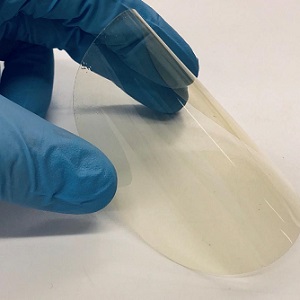New Nano-rubber-like Material to Replace Ruptured Human Tissues

Researchers from Chalmers University of Technology, Sweden, have created a new, rubber-like material with a unique set of properties, which could act as a replacement for human tissue in medical procedures. The material has the potential to make a big difference to many people's lives. New Risk-free Adaptable Material Based on Nanostructuring In the new study, the Chalmers researchers developed a material consisting solely of components that have already been shown to work well in the body. The foundation of the material is the same as plexiglass, a material which is common in medical technology applications. Through redesigning its makeup, and through a process called nanostructuring, they gave the newly patented material a unique combination of properties. The researchers' initial intention was to produce a hard bone-like material, but they were met with surprising results. Soft, Flexible and Extremely Elastic Material “ We were really surprised that the material tu






